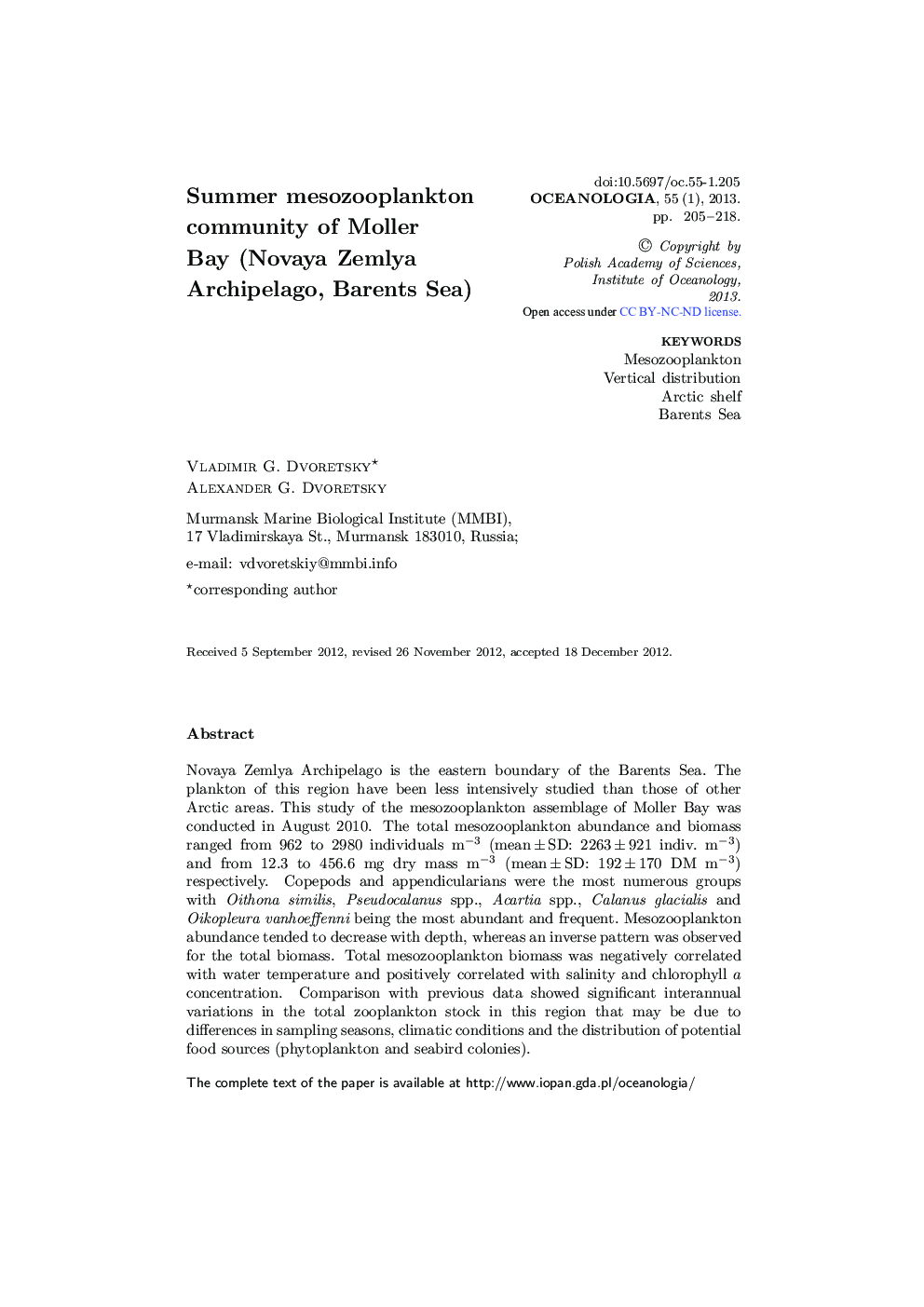| Article ID | Journal | Published Year | Pages | File Type |
|---|---|---|---|---|
| 2069962 | Oceanologia | 2013 | 14 Pages |
Novaya Zemlya Archipelago is the eastern boundary of the Barents Sea. The plankton of this region have been less intensively studied than those of other Arctic areas. This study of the mesozooplankton assemblage of Moller Bay was conducted in August 2010. The total mesozooplankton abundance and biomass ranged from 962 to 2980 individuals m−3 (mean ± SD: 2263 ± 921 indiv. m−3) and from 12.3 to 456.6 mg dry mass m−3 (mean ± SD: 192 ± 170 DM m−3) respectively. Copepods and appendicularians were the most numerous groups with Oithona similis, Pseudocalanus spp., Acartia spp., Calanus glacialis and Oikopleura vanhoeffenni being the most abundant and frequent. Mesozooplankton abundance tended to decrease with depth, whereas an inverse pattern was observed for the total biomass. Total mesozooplankton biomass was negatively correlated with water temperature and positively correlated with salinity and chlorophyll a concentration. Comparison with previous data showed significant interannual variations in the total zooplankton stock in this region that may be due to differences in sampling seasons, climatic conditions and the distribution of potential food sources (phytoplankton and seabird colonies).
